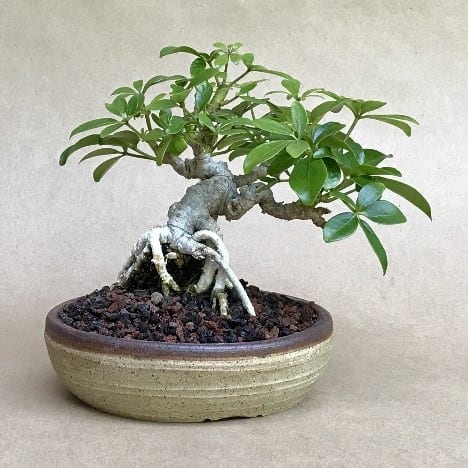Different types of trees that can be introduced to the art of bonsai possess unique, incomparable beauty. Regardless of their appearance, all trees are living creatures – as such, they do require healthy access to light so that they can accomplish the process of photosynthesis, and to thrive in return.
With the growing popularity and joy of being a bonsai tree gardener, many enthusiasts are looking forward to bonsai trees that grow under low light due to various reasons.
For instance, some people may wish to nurture a bonsai tree in their office where the amount of light the plant can get can be limited.
Other people may happen to live in regions where access to abundant light is scarce because of climate specifications. In such cases, grow lights for bonsai can work great but if you want to stick to natural light and/or grow lights of low power, then your miniature trees can suffer.
Below, we have compiled the top 5 bonsai trees that grow under low light. You will be amazed by how easy and beautiful these miniature creatures can grow with just a pinch of love and gentle care.
Rubber Tree Bonsai

Scientifically known as Ficus elastica, rubber tree can make a beautiful choice for bonsai enthusiasts looking for low-light plant species.
Easy to take care of and highly adaptable, rubber tree bonsai are distinct for the glossy appearance of their multiple tiny leaves. In fact, rubber trees make one of the most popular choices among newbie bonsai gardeners.
Furthermore, branches and trunk can be successfully trained into manageable shapes, making the rubber tree bonsai even more appealing to bonsai enthusiasts of all levels of experience.
Video by Nigel Saunders, The Bonsai Zone – Rubber Tree Bonsai, Aug 2014
Source: youtube.com
Lucky Bamboo Bonsai
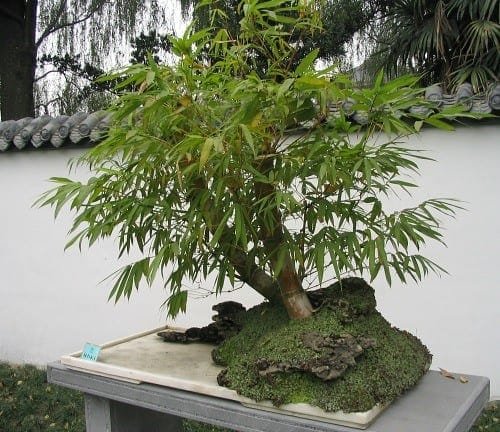
Even though there are still debates over whether or not a lucky bamboo tree (Dracaena braunii/ Dracaena Sanderiana) can be fully introduced to the art of bonsai, there is no doubt that it does make a wonderful choice for those looking to grow low-light demanding plants.
As a matter of fact, lucky bamboo is actually highly tolerable towards both high, as well as low light. It is fairly easy to grow (probably one of the easiest, if not THE easiest to grow), and it makes a beautiful addition for improving the flow of healing energy – Qi – based on the Chinese system of Feng Shui.
Video by Green plants – How to Grow Lucky Bamboo Your Own Style | Lucky Bamboo Growing and Care Tips(subtitle)//Green plants
Source: youtube.com
Norfolk Island Pine Bonsai
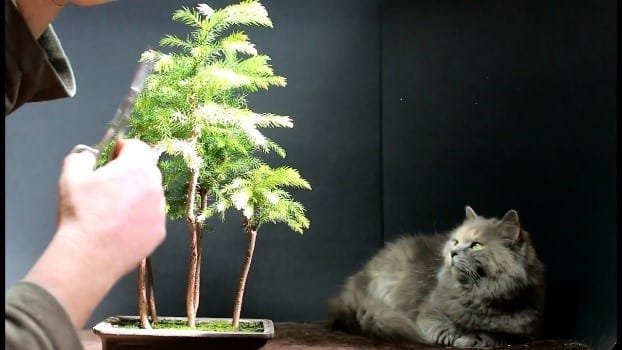
Araucaria heterophylla – or Norfolk Island pine – are slow growing plant varieties.
However, for the bonsai enthusiasts who are searching for low-light demanding trees and are willing to nurture the virtue of patience, a Norfolk Island pine bonsai can be a spectacular choice.
Do keep in mind that this pine variety cannot tolerate low temperatures – it can quickly die if exposed to anything below 35 degrees.
Video by Growing Answers – Norfolk Island Pine Bonsai (After Heavy Pruning)
Source: youtube.com
Madagascar Dragon Tree Bonsai
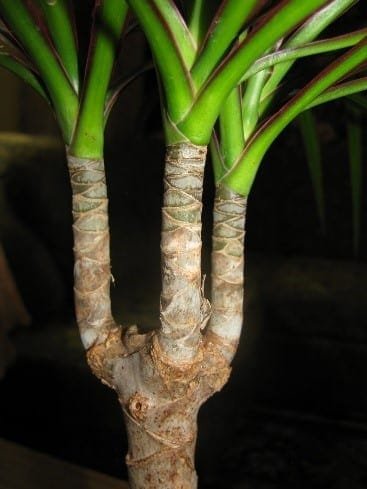
Another fantastic member of the Dracaena genus – Dracaena Marginata – or Madagascar dragon tree – makes a low-light demanding, easy-to-maintain bonsai.
While there isn’t much room for experiments in shaping the branches, the stem can become truly mesmerizing with age and proper training. Misting leaves once weekly can greatly help in enhancing the beauty and overall well-being of Madagascar dragon bonsais.
Video by Nigel Saunders, The Bonsai Zone – Starting a Dragon Tree Bonsai, Feb 2018
Source: youtube.com
Hawaiian Umbrella Bonsai
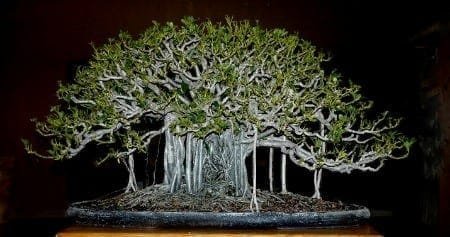
Consisting of different plant varieties, the Schefflera family can help you pick and maintain a gorgeous bonsai tree even when growing it under low light conditions.
The exact variety you want to consider is the Hawaiian Umbrella (Schefflera arboricola).
Although not considered a bonsai tree variety by some, open-minded bonsai enthusiasts easily spotted the genuine potential of this beautiful plant variety for creating bonsai masterpieces.
Called “the indestructible bonsai”, the aerial roots make up for a true one-of-a-kind appearance that can bring pleasure to the senses of anyone who is lucky to contemplate the miniature, low-light demanding tree.
Video by Bonsai by LAN – Dwarf Umbrella Tree Schefflera arboricola indoor bonsai, repot and prune – April 2017
Source: youtube.com
The Takeaway

Image Courtesy of pixabay.com
The Japanese wisdom embedded in these words can be also applied to the art of bonsai and finding the most suitable tree that you can grow with confidence and success.
With this in mind, bonsai trees that grow under low light can be a perfect choice to liven up any space without having to see your bonsai masterpiece suffer light deprivation. As long as you give your bonsai tree love and affection, it is always willing to give these back to you in return.
